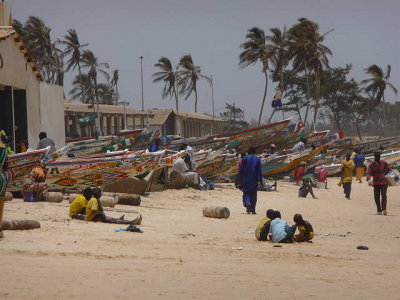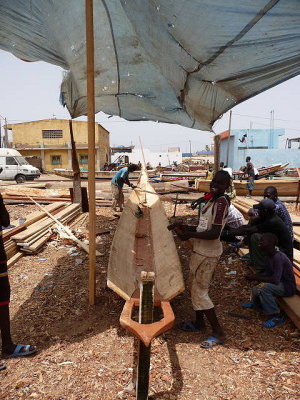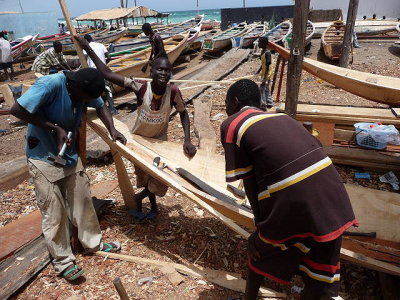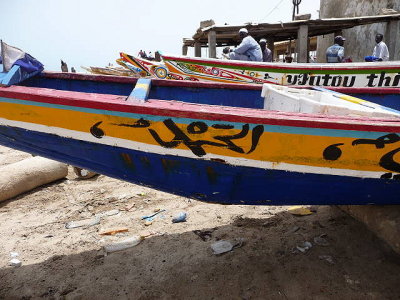Kayar - Centered on the fisheries
 The heart beat of Kayar is the fishery. One next to the other, the pirogues are lined up on the beach, the pride of their owners and the fishermen braving the dangerous swell they have to get through when heading for the fishing grounds.
The heart beat of Kayar is the fishery. One next to the other, the pirogues are lined up on the beach, the pride of their owners and the fishermen braving the dangerous swell they have to get through when heading for the fishing grounds.
The major fishing season in Kayar lasts for six months (November to June). During that period, hundreds of pirogues converge on Kayar from other coastal regions in Senegal and neighbouring countries.
Until the 1980s the fishing was particularly lucrative and agriculture florished as well in Kayar. In the second half of the 1980s, around 1986/7, the effects of industrial fishing were becoming apparent. In this context, the fishermen felt obliged to adapt and introduce not only moderns, higher performance, gears, but also change the management methods.
Until then, the horizon of ambitions of young people was to enter the fisheries, not to go to school.

The next photo shows the view across some pirogues out onto the sea. The pirogues sit on trunks of palm trees to facilitate moving them about.
 It is hard work to pull a returning pirogue up to the safety of the beach. Trunks of palm trees serve as rollers to help get on with the job.
It is hard work to pull a returning pirogue up to the safety of the beach. Trunks of palm trees serve as rollers to help get on with the job.
 The beach is also the place for other types of action: here the carpenters are busy shaping a new pirogue. The master carpenter gets help from some young apprentices.
The beach is also the place for other types of action: here the carpenters are busy shaping a new pirogue. The master carpenter gets help from some young apprentices.
The skills get transferred from generation to generation, all without technical drawings!
Depending on the type of fishing they are intended for, the pirogues come in greatly different sizes.
 The rough conditions also require frequent repair work and wooden planks are now in short supply and expensive.
The rough conditions also require frequent repair work and wooden planks are now in short supply and expensive.
This notwithstanding, wooden pirogues are preferred over fibreglass boats.
 No pirogue will go to see without specific markings, sacrifices and all kinds of other ceremonies to put its work under a good star and make it bring back its crew and cargo safely from each trip.
No pirogue will go to see without specific markings, sacrifices and all kinds of other ceremonies to put its work under a good star and make it bring back its crew and cargo safely from each trip.









